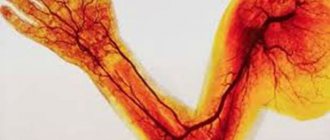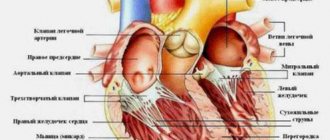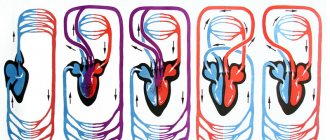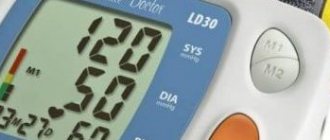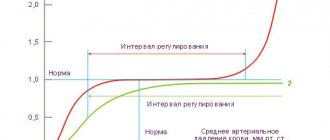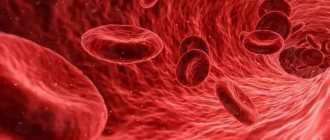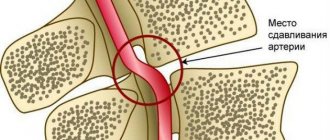December 12, 2013
The extensive network of the human circulatory system consists not only of large veins and arteries, but also of the smallest capillaries
The extensive network of the human circulatory system consists not only of large veins and arteries, but also of the smallest capillaries, thanks to which all the substances necessary for optimal life are delivered to each of our cells along with blood. It is not surprising that a person’s health largely depends on the state of his cardiovascular system.
Foundation of life
The circulatory system consists of more than just the heart, blood, and blood vessels. This is only one of two complementary systems - cardiovascular and lymphatic. The latter serves to transport lymph - a colorless liquid with many lymphocytes. The lymphatic system is also extremely important, because human immunity largely depends on it. It is these two systems - cardiovascular and lymphatic - that make up the largest human circulatory system with a total length of more than 100,000 km. This complex mechanism is driven by the heart. This living motor, consisting of muscles, works with amazing performance, pumping more than 9,500 liters of blood per day. In this way, blood is supplied to every cell.
Blood swirls
Followers of the “ancient teacher” Galen believed that the arteries contain little blood and a lot of air, while the veins are filled with blood. It would seem, where did this belief come from? After all, with any injury that affects an artery, blood flows! This has been known since ancient times, and was also observed during ancient sacrifices. But doctors had a different picture. They relied on data obtained from autopsies. And in a dead body, the arteries are bloodless, while the veins are full. And this picture prevented a correct understanding of the problem. Therefore, nothing was known about blood circulation. It was believed that blood was formed in the liver and from there through the greater vena cava it entered the heart.
William Harvey. Photo: Commons.wikimedia.org
Known for his skepticism even in his student years, Harvey wrote: “When I first turned all my thoughts and desires to observations based on vivisections (to the extent that I had to do them), so that through my own contemplations, and not from books and manuscripts, to recognize the meaning and benefits of cardiac movements in living beings, I discovered that this question is very complex and full of mysteries at every step.” The scientist came to his conclusion through numerous experiments, when he studied the still beating hearts and lungs of dissected animals.
Harvey made this great discovery in 1616, when he said in one of his lectures that “the blood circles in the body.” However, for many years he continued to search and accumulate evidence. And only twelve years later he finally published the results of his work: “Anatomical studies on the movement of the heart and blood of animals.”
Accusations of vivisection - experiments involving the dissection of living animals - continue to haunt his reputation to this day. However, everything he did, he did for the sake of science. The burning candle on William Harvey's coat of arms symbolized "life consumed by flame, yet luminous."
One chance in a hundred. Who was saved by the first blood transfusion? More details
Main functions of the system
The work of the circulatory system begins with the enrichment of blood with oxygen. “Depleted” blood enters the heart through the veins: first into the first chamber of the right atrium, then into the right ventricle of the heart. From there, the more powerful heart muscles push oxygen-deprived blood into the pulmonary trunk, divided into two pulmonary arteries. Next, the blood enters the lungs through numerous pulmonary vessels, where it is enriched with oxygen and returns through the pulmonary vessels to the heart - but this time to the left atrium and ventricle. The left ventricle of the heart is responsible for supplying blood to the entire body, therefore, the muscles of the left ventricle are more developed. Human blood circulation consists of two circles: small (pulmonary) and large. The small circle is responsible for enriching the blood with oxygen, and the large circle is responsible for transporting blood throughout the body. Despite the fact that two atria and two ventricles contract simultaneously, the thick-walled left ventricle experiences a load six times greater, because it has to circulate blood in a large circle, supplying all limbs with useful substances.
Mister Diafuarus
“He is firm in argument, unshakable in his views, never changes his judgments ... he blindly believes our ancient teachers and does not even want to hear about the so-called discoveries of our century regarding blood circulation and the like.” of Moliere’s “The Imaginary Invalid”, Doctor Diafuarus, praised the virtues of a doctor It was precisely this position that the outstanding researcher of the human body, William Harvey (1578–1657), had to face when he first published his essay on the movement of the heart and blood.
Article on the topic How does the human circulatory system work? Infographics
The scientist had to come to grips with the then dominant traditional view, based on the teachings of the great physician of Antiquity, Galen . The passionate and heated discussion about blood circulation went far beyond the circle of specialists. The Paris Faculty of Medicine, whose professors unwaveringly adhered to the teachings of Galen, declared real war on Harvey.
What harms blood vessels?
The scourge of modern man is the deposits of fat on the walls of blood arteries (mainly “bad” cholesterol), as a result of which atherosclerotic changes in blood vessels occur. Fat accumulations form atheromas and cholesterol plaques on the walls of blood vessels, which narrow the patency of blood vessels and impair blood flow. The heart has to work harder, which leads to its premature aging, while little oxygenated blood reaches the tissues. As a result, the body faces the threat of oxygen starvation.
Functions of the human circulatory system
The main role played by the cardiovascular system in the human body is to move blood from the heart to other internal organs and tissues and back. Many processes depend on this, thanks to which it is possible to maintain normal life activity:
- cellular respiration, that is, the transfer of oxygen from the lungs to tissues with subsequent utilization of waste carbon dioxide;
- nutrition of tissues and cells with substances contained in the blood reaching them;
- maintaining a constant body temperature through heat distribution;
- ensuring an immune response after pathogenic viruses, bacteria, fungi and other foreign agents enter the body;
- removal of decay products to the lungs for subsequent excretion from the body;
- regulation of the activity of internal organs, which is achieved through the transport of hormones;
- maintaining homeostasis, that is, the balance of the internal environment of the body.
Human circulatory system: briefly about the main thing
To summarize, it is worth noting the importance of maintaining a healthy circulatory system to ensure the performance of the entire body. The slightest disruption in blood circulation processes can cause a lack of oxygen and nutrients in other organs, insufficient removal of toxic compounds, disruption of homeostasis, immunity and other vital processes. To avoid serious consequences, it is necessary to eliminate factors that provoke diseases of the cardiovascular complex - avoid fatty, meat, fried foods, which clog the lumen of blood vessels with cholesterol plaques; lead a healthy lifestyle in which there is no place for bad habits, try to play sports to the best of your physiological ability, avoid stressful situations and react sensitively to the slightest changes in well-being, taking timely and adequate measures for the treatment and prevention of cardiovascular pathologies.
How to keep blood vessels and heart healthy?
The narrowing of the lumen of the arteries leads over time to atherosclerosis, a disease in which the vessels become denser and less elastic.
Atherosclerosis can cause even more serious diseases - such as coronary heart disease, hypertension, angina pectoris, myocardial infarction, and so on. These diseases are practically untreatable, so prevention is extremely important for every person. It is advisable to start improving the circulatory system by changing your lifestyle. This is especially true for overweight people. They should make every effort to normalize it. Moderate and regular physical activity and a proper diet will help you quickly cope with extra pounds, normalize your metabolism and make your circulatory system an effective mechanism for actively supplying the body with all the necessary substances. As for eating habits, a person striving for healthy heart function should exclude animal fats from the diet, which saturate the body with cholesterol and triglycerides. It is also important to limit the consumption of products such as margarine and palm oil (as a result, most confectionery products). Preference should be given to olive oil and fatty sea fish - products rich in polyunsaturated omega-3 fatty acids. A healthy circulatory system is a guarantee of your excellent health, vigor and full functioning of all internal organs. Do you want to be healthy? So, take care of the circulatory system! Photo: flickr.com Tags:
- Heart and blood vessels
- Circulation
To leave a comment you must be an authorized user
How William Harvey discovered the human circulatory system
In the sixteenth century, doctors relied on the 1,500-year-old words of the Greek physician Galen, who said that food is converted into blood in the liver and then used by the body for fuel. Most agreed that the blood that flowed through the artery had no connection with the blood that flowed through the veins.
When the English physician William Harvey returned to England in 1602, he married the daughter of Queen Elizabeth's doctor, then was appointed physician to the court of King James I, and then personal physician to the future King Charles I in 1618.
While serving the English kings, Harvey focused his research on veins and arteries. He conducted extensive experiments on animals and human cadavers. During these autopsies, he discovered a series of valves that exist throughout the veins. Harvey was not the first to discover these valves, but he was the one who noticed that they always directed blood flow towards the heart. Blood flowed through the veins only from the arms, legs and head back to the heart.
Harvey began a series of animal experiments in which he tied up a single artery or vein to see what happened. Sometimes he would clamp an artery and then release it to see where that rush of blood would go. He did the same with the veins, pinching the vein and then releasing it. Sometimes he would clamp a vein and an artery and then release them one at a time. These experiments proved that arteries and veins were connected into a single circulatory system and that blood always flowed from the arteries to the veins.
Harvey turned to the heart itself and soon realized that the heart acts like a muscle and pushes blood into the lungs and arteries. He followed the blood passing through various animals. The scientist saw that the blood was not consumed, but circulated again and again through the system, delivering air and nutrition to the body.
By 1625, Harvey had discovered an almost complete picture of the circulatory system. He faced two problems. First, he could not understand how blood got from the artery to the vein, although his experiments proved that this was the case. Harvey's second problem was before church condemnation when he said that the heart is simply a muscular pump and not the home of the soul and consciousness.
In 1628, Harvey found a small German publisher who published a short (72 pages) summary of his work and discoveries. He published it in Latin (the language of science), hoping that no one in England would read it.
News about the scientist's book spread throughout Europe and immediately made him notorious. He lost many patients who were shocked by his statements. But Harvey's science was careful and precise. By 1650, his book had become a recognized textbook on the circulatory system.
Photo: back2-school.ru
Heart
Having determined which sections the circulatory system consists of, they pay special attention to the study of the heart. It is a hollow muscular organ shaped like a cone. The heart is located in the left half of the chest at the level of the second to fifth ribs. The organ is located in the pericardial sac, divided by longitudinal and transverse septa into two ventricles and two atria.
Features :
- The walls have three layers: the outer layer is the epicardium, the middle layer is the myocardium, formed by a special striated muscle, and the inner layer is the endocardium.
- The thickness of the muscle layer of the left ventricle reaches 10-15 mm, the right - from 5 to 8 mm, the atria - from 2 to 3 mm.
- The one-way flow of blood from the atria to the ventricles, to the aorta and pulmonary artery is ensured by the heart valves - folds of the inner membrane.
The work of the heart consists of contraction (systole) and relaxation (diastole). Myocardial contractions occur rhythmically: 70-75 times per minute at rest. Electrical impulses originate in the muscle itself. This ability is called “automaticity of the heart.” The high efficiency of the organ is due to increased blood supply and active metabolism in the heart muscle.

